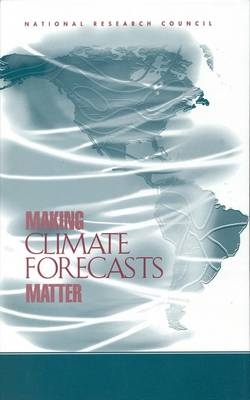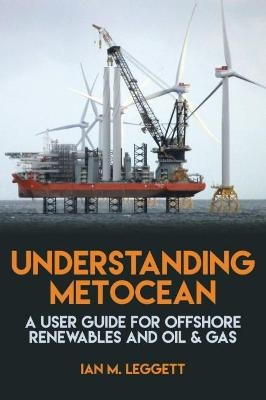
Making Climate Forecasts Matter
Seiten
1999
National Academies Press (Verlag)
978-0-309-06475-0 (ISBN)
National Academies Press (Verlag)
978-0-309-06475-0 (ISBN)
Deals with climate forecasting and identifies research directions in this regard. This book explores: vulnerability of human activities to climate; state of the science of climate forecasting; how societies coevolved with their climates and cope with variations; and how climate information should be disseminated for the best response.
El Nino has been with us for centuries, but now we can forcast it, and thus can prepare far in advance for the extreme climatic events it brings. The emerging ability to forecast climate may be of tremendous value to humanity if we learn how to use the information well.
How does society cope with seasonal-to-interannual climatic variations? How have climate forecasts been used—and how useful have they been? What kinds of forecast information are needed? Who is likely to benefit from forecasting skill? What are the benefits of better forecasting?
This book reviews what we know about these and other questions and identifies research directions toward more useful seasonal-to-interannual climate forecasts. In approaching their recommendations, the panel explores:
Vulnerability of human activities to climate.
State of the science of climate forecasting.
How societies coevolved with their climates and cope with variations in climate.
How climate information should be disseminated to achieve the best response.
How we can use forecasting to better manage the human consequences of climate change.
Table of Contents
Front Matter
Summary
1 Climate Variability, Climate Forecasting, and Society
2 Climate Forecasting and Its Uses
3 Coping with Seasonal-to-Interannual Climatic Variations
4 Making Climate Forecast Information More Useful
5 Measuring the Consequences of Climate Variability and Forecasts
6 Scientific Priorities
References
About the Authors
Index
El Nino has been with us for centuries, but now we can forcast it, and thus can prepare far in advance for the extreme climatic events it brings. The emerging ability to forecast climate may be of tremendous value to humanity if we learn how to use the information well.
How does society cope with seasonal-to-interannual climatic variations? How have climate forecasts been used—and how useful have they been? What kinds of forecast information are needed? Who is likely to benefit from forecasting skill? What are the benefits of better forecasting?
This book reviews what we know about these and other questions and identifies research directions toward more useful seasonal-to-interannual climate forecasts. In approaching their recommendations, the panel explores:
Vulnerability of human activities to climate.
State of the science of climate forecasting.
How societies coevolved with their climates and cope with variations in climate.
How climate information should be disseminated to achieve the best response.
How we can use forecasting to better manage the human consequences of climate change.
Table of Contents
Front Matter
Summary
1 Climate Variability, Climate Forecasting, and Society
2 Climate Forecasting and Its Uses
3 Coping with Seasonal-to-Interannual Climatic Variations
4 Making Climate Forecast Information More Useful
5 Measuring the Consequences of Climate Variability and Forecasts
6 Scientific Priorities
References
About the Authors
Index
Paul C. Stern and William E. Easterling, Editors, Panel on the Human Dimensions of Seasonal-to-Interannual Climate Variability, Commission on Behavioral and Social Sciences and Education, National Research Council
1 Front Matter; 2 Summary; 3 1 Climate Variability, Climate Forecasting, and Society; 4 2 Climate Forecasting and Its Uses; 5 3 Coping with Seasonal-to-Interannual Climatic Variations; 6 4 Making Climate Forecast Information More Useful; 7 5 Measuring the Consequences of Climate Variability and Forecasts; 8 6 Scientific Priorities; 9 References; 10 About the Authors; 11 Index
| Erscheint lt. Verlag | 27.6.1999 |
|---|---|
| Verlagsort | Washington |
| Sprache | englisch |
| Maße | 152 x 229 mm |
| Themenwelt | Naturwissenschaften ► Geowissenschaften ► Meteorologie / Klimatologie |
| ISBN-10 | 0-309-06475-9 / 0309064759 |
| ISBN-13 | 978-0-309-06475-0 / 9780309064750 |
| Zustand | Neuware |
| Informationen gemäß Produktsicherheitsverordnung (GPSR) | |
| Haben Sie eine Frage zum Produkt? |
Mehr entdecken
aus dem Bereich
aus dem Bereich
Grundlagen – Maßnahmen – Planungen
Buch | Hardcover (2021)
Springer Fachmedien Wiesbaden GmbH (Verlag)
149,99 €
A User Guide for Offshore Renewables and Oil & Gas
Buch | Hardcover (2024)
Whittles Publishing (Verlag)
56,10 €
das Wolkenbuch für alle
Buch | Softcover (2024)
Seifert Verlag
20,00 €


